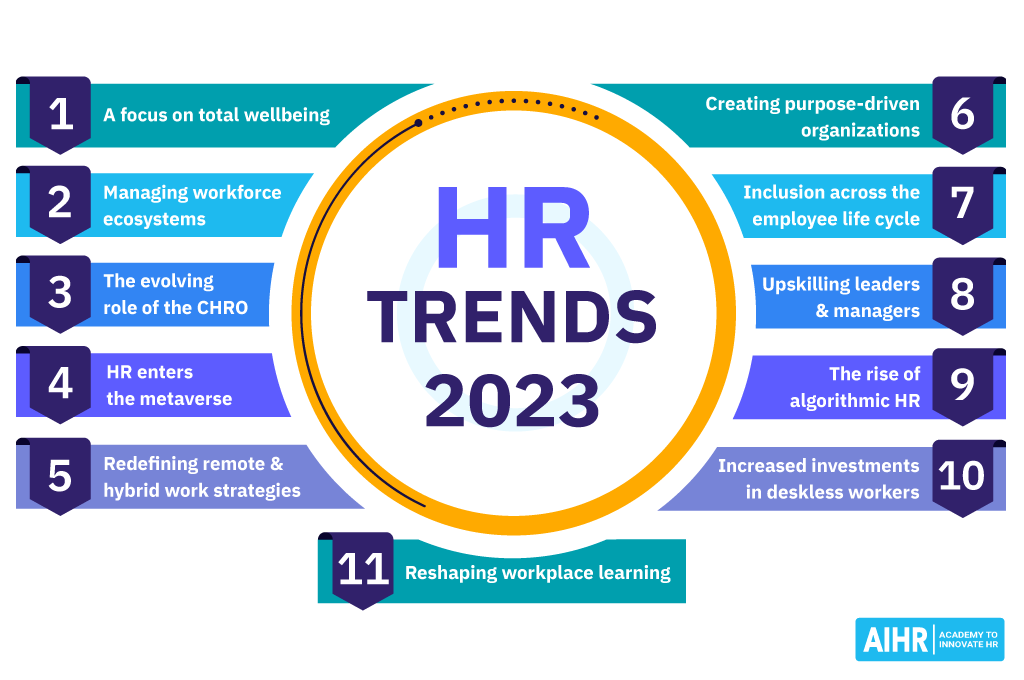HR Technology Trends to Improve Efficiency

Human Resources (HR) technology plays a crucial role in modern organizations by streamlining processes, enhancing communication, and improving overall efficiency. With the constant advancement of technology, HR departments are continually seeking innovative solutions to manage their workflow effectively. In this article, we will explore some of the latest HR technology trends that are transforming the way HR professionals operate.
1. Artificial Intelligence (AI)
Artificial Intelligence has become a game-changer in various industries, including HR. AI-powered tools can automate mundane tasks, such as resume screening and candidate sourcing, freeing up HR personnel to focus on higher-level responsibilities. AI chatbots are being used to assist employees with commonly asked questions, providing instant support and improving engagement. Predictive analytics is another area where AI shows promise, helping HR professionals make data-driven decisions for recruitment, performance evaluation, and employee retention.
2. Employee Self-Service Portals
Employee self-service (ESS) portals have become a popular HR technology trend due to their ability to empower employees. These web-based platforms allow employees to access important HR information, such as pay stubs, benefits enrollment, and vacation requests. By providing a self-service option, organizations reduce administrative tasks and enhance employee satisfaction as individuals can handle their HR-related needs independently. ESS portals can also include features like training modules, performance evaluation tools, and internal communication channels.
3. Mobile HR Applications
As smartphones become an integral part of our lives, mobile HR applications have gained immense popularity. These applications enable HR professionals and employees to access HR-related information and perform necessary tasks on-the-go. From reviewing job applications to submitting leave requests, mobile apps provide convenience and flexibility. Location and time barriers no longer limit the HR department’s efficiency, ensuring that critical HR tasks can be performed anytime, anywhere.
4. Data Analytics and Workforce Planning
Data analytics have revolutionized HR departments by enabling evidence-based decision-making. By collecting and analyzing HR data, organizations can identify trends, predict future scenarios, and strategically plan their workforce. Using analytics tools, HR professionals can gain insights into employee performance, engagement levels, and skills gaps. This information helps in strategic workforce planning, succession planning, and talent development initiatives. Data analytics also assist in identifying potential attrition risks, allowing HR to take proactive measures for employee retention.
5. Performance Management Tools
Traditional annual performance reviews are slowly giving way to continuous feedback systems and performance management tools. These tools provide a centralized platform for HR professionals, managers, and employees to document goals, track progress, and provide real-time feedback. Automated reminders ensure regular check-ins, fostering ongoing performance discussions. Performance management tools often incorporate features like 360-degree feedback, goal alignment, and individual development plans, improving transparency, and encouraging professional growth.
Conclusion
The use of HR technology has transformed the way HR departments operate, streamlining processes, and improving efficiency. The trends discussed in this article, including artificial intelligence, employee self-service portals, mobile HR applications, data analytics, and performance management tools, have the potential to revolutionize HR practices. By embracing these technologies, organizations can optimize their HR functions, enhance employee experiences, and ultimately drive success in today’s fast-paced business landscape.